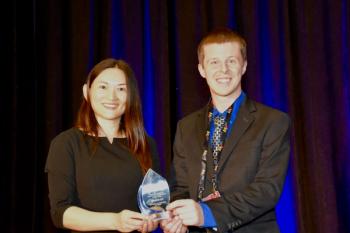
Pittcon 2024: Developments in Raman Spectroscopy
Experts discuss Raman/SERS approaches across a number of different fields.
Experts from universities and companies around the world presented a variety of Raman/SERS approaches at the Pittcon conference in San Diego, California. In case you missed it, here's a recap of what was discussed.
The session began “Confocal Raman Microscopy as a Probe of Chemical Structure and Composition within Processed Polymers and Electrode-Supported Films,” led by Carol Korzeniewski of Texas Tech University. Korzeniewski discussed strategies for measuring properties of the confocal probe volume as a function of sampling depth and sample immersion fluid will be discussed.
Miharu Koh of the University of Utah presented “Monitoring pH- and Hydration-induced Structural Changes of Linear Poly(ethylenimine) using Confocal Raman Microscopy.” Linear poly(ethyleneimine) (LPEI) is a hygroscopic polymer widely used for cellular transfection in gene delivery, polymer electrolytes in rechargeable batteries, and redox polymers in biosensor applications. LPEI exhibits unique structural and conformational changes due to its self-buffering properties and electrostatic interactions of the secondary amine groups that remain poorly understood.
The session continued with “Development of a Versatile SERS Sensor using Tyramine-medicated Crosslinking Chemistry,” led by Hyejin Chang of Kangwan National University in Chuncheon, South Korea. In this talk, Chang discussed a novel strategy for generating active hot spots using tyramine-mediated crosslinking chemistry. It is expected that this study makes a significant contribution to achieve a reliable SERS sensing which is expandable to a wide range of analyte molecule.
Adam Hopkins of Metrohm USA presented “In Situ Raman-Electrochemistry for Routinely Characterizing Electronic Properties of Doped SWCNTs." Here, in situ Raman-electrochemistry as a unique technique for both predicting electronic properties and understanding the charging mechanism of single wall nanotubes (SWCNTs) is demonstrated.
David Rist of The Ohio State University presented “Development of SERS Sensors for Use in Targeted Magnetic Cellular Sorting” at 4:00 PM. Surface enhanced Raman spectroscopy (SERS) is a specific nondestructive technique that is especially useful for biological samples due to its insensitivity to water and can be used to determine a distinct vibrational spectrum for each peptide-protein interaction. SERS requires the use of plasmonic nanoparticles for localized electromagnetic enhancement. By utilizing magnetic plasmonic nanoparticles, SERS can be used, hot spots can be generated, and magnetically activated cellular sorting (MACS) techniques can be applied.
“Chemically Synthesized Gold Nanobowls Composed with Graphene Oxide Materials for Ultrasensitive Surface Enhanced Raman Spectroscopy” was presented by Barbara Palys of the University of Warsaw. In this presentation, the novel chemical synthesis of gold nanobowls (AuNBs) was compared to gold nanospheres (AuNSs) and gold nanourchins (AuNUs) having similar size. Research has indicated that AuNBs show largely higher enhancement factors comparing to AuNUs and AuNSs. The preconditioning of graphene oxide (GO) can modify the Raman intensity by few times. Palys also discussed possible factors influencing the enhancement.
The session concluded with the presentation “Plasmon-Determined Selectivity in Photocatalytic Transformations on Gold and Gold-Palladium Nanostructures,” led by Dmitry Kurouski of Texas A&M University. In this talk, Kurouski demonstrated how tip-enhanced Raman spectroscopy (TERS), an emerging analytical technique that has single-molecule sensitivity and sub-nanometer spatial resolution, can be used to investigate plasmon-driven reactivity of 2-nitro-5-thiolobenzoic acid (2-N-5TBA) on gold and gold@palladium nanoplates (AuNPs and Au@PdNPs). Kurouski is Spectroscopy's 2023
Newsletter
Get essential updates on the latest spectroscopy technologies, regulatory standards, and best practices—subscribe today to Spectroscopy.




